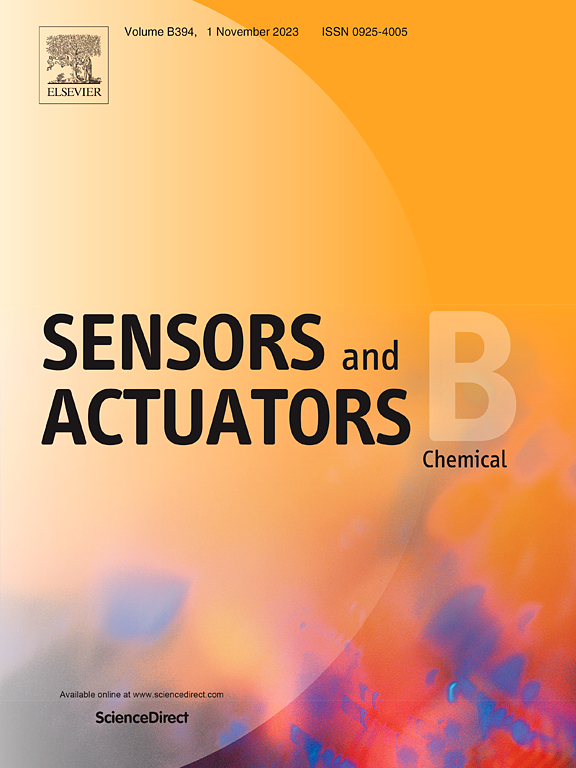A dual-emissive carbon dot-functionalized paper-based analytical device for copper ion detection in foods
IF 3.7
1区 化学
Q1 CHEMISTRY, ANALYTICAL
引用次数: 0
Abstract
On-site quick analysis of copper (II) ions (Cu2 +) for food safety assessment requires techniques that are advantageous in terms of reliability, sensitivity, and ease of signal reading. Recognizing the urgent need to develop a portable sensing platform for this purpose, we constructed a fluorescent paper-based analytical device (FPAD) by in-situ synthesis of porphyrin-based dual-emissive carbon dots (DE-CDs). The DE-CDs exhibit two distinct emission peaks at 495 nm and 650 nm, which are attributed to emissions of the carbon core and molecular states, respectively. Upon interaction with Cu2+, the emission intensity at 650 nm decreases, while the intensity at 495 nm remains stable, allowing ratiometric fluorescent detection of Cu2+ with the single fluorophore-decorated FPAD. The self-calibration effect provided by background emission, in combination with the superior structural stability of FPAD, effectively improves the reliability of Cu2+ detection. The efficient electron-withdrawing effect of Cu2+ enables FPADs to respond to ultra-trace levels of Cu2+, achieving highly sensitive detection (limit of detection: 18.4 nM). Moreover, the obvious emission color transition of FPAD leads to the visualized Cu2+ detection and smartphone-based quantification via color analysis. The FPAD effectively excludes interferences from complex food components, setting the basis for Cu2+ detection in practical food samples. The spike-recovery rate (86–112 %) is comparable to that of gold-standard methods.

一种用于食品中铜离子检测的双发射碳点功能化纸基分析装置
用于食品安全评估的铜(II)离子(Cu2+)的现场快速分析需要在可靠性,灵敏度和易于信号读取方面具有优势的技术。认识到开发便携式传感平台的迫切需要,我们通过原位合成卟啉基双发射碳点(DE-CDs)构建了荧光纸基分析装置(FPAD)。DE-CDs在495nm和650nm处表现出两个明显的发射峰,分别归因于碳核和分子态的发射。与Cu2+相互作用后,650 nm处的发射强度降低,而495 nm处的发射强度保持稳定,可以用单荧光团修饰的FPAD进行Cu2+的比例荧光检测。背景发射提供的自校准效果,结合FPAD优越的结构稳定性,有效提高了Cu2+检测的可靠性。Cu2+的高效吸电子效应使fpad能够响应超痕量Cu2+水平,实现高灵敏度检测(检测限:18.4 nM)。此外,FPAD明显的发射色过渡导致了可视化的Cu2+检测和基于智能手机的颜色分析定量。FPAD有效地排除了复杂食品成分的干扰,为实际食品样品中的Cu2+检测奠定了基础。峰回收率(86 ~ 112%)与金标准方法相当。
本文章由计算机程序翻译,如有差异,请以英文原文为准。
求助全文
约1分钟内获得全文
求助全文
来源期刊

Sensors and Actuators B: Chemical
工程技术-电化学
CiteScore
14.60
自引率
11.90%
发文量
1776
审稿时长
3.2 months
期刊介绍:
Sensors & Actuators, B: Chemical is an international journal focused on the research and development of chemical transducers. It covers chemical sensors and biosensors, chemical actuators, and analytical microsystems. The journal is interdisciplinary, aiming to publish original works showcasing substantial advancements beyond the current state of the art in these fields, with practical applicability to solving meaningful analytical problems. Review articles are accepted by invitation from an Editor of the journal.
 求助内容:
求助内容: 应助结果提醒方式:
应助结果提醒方式:


